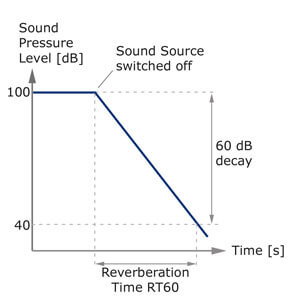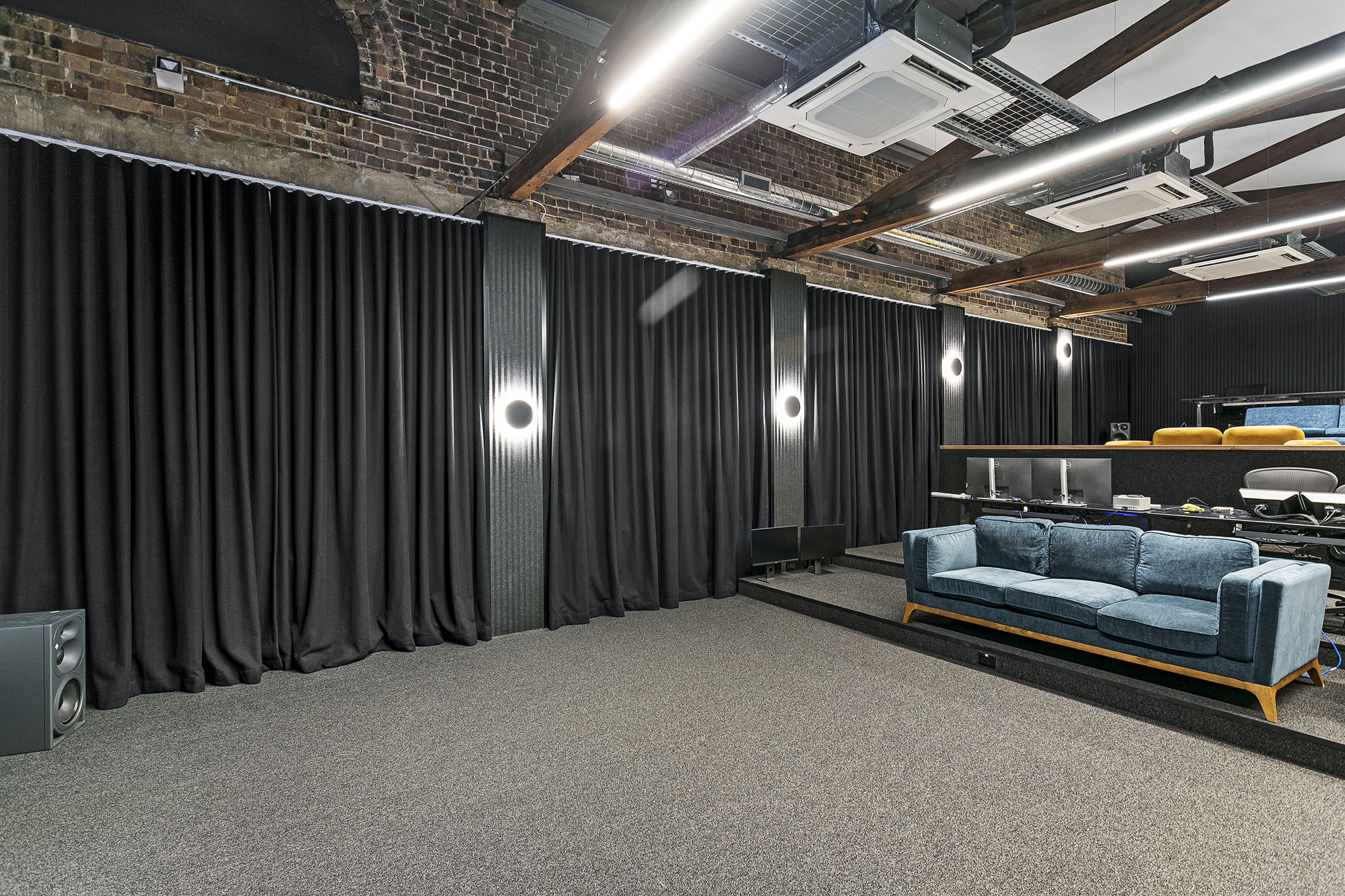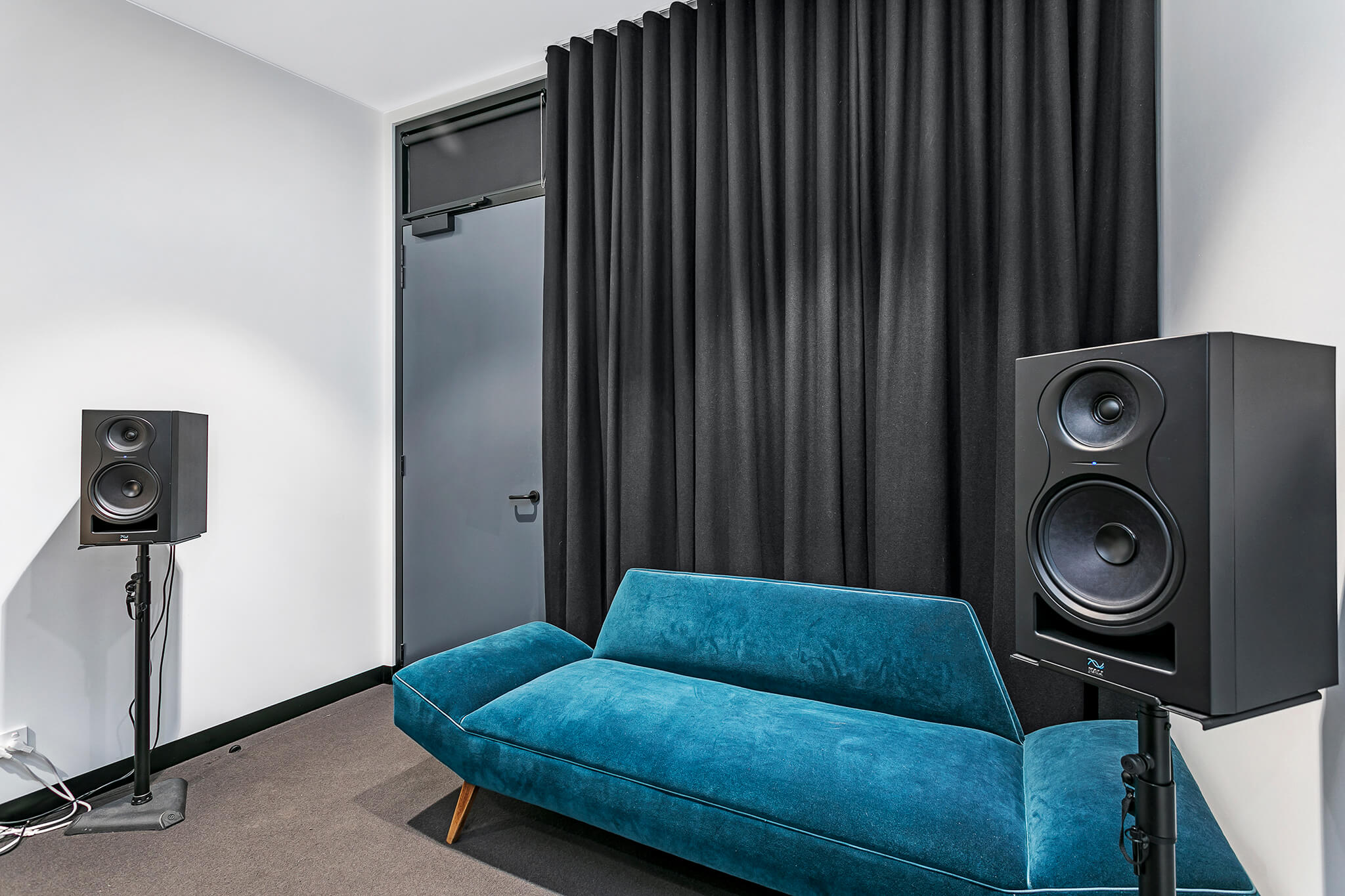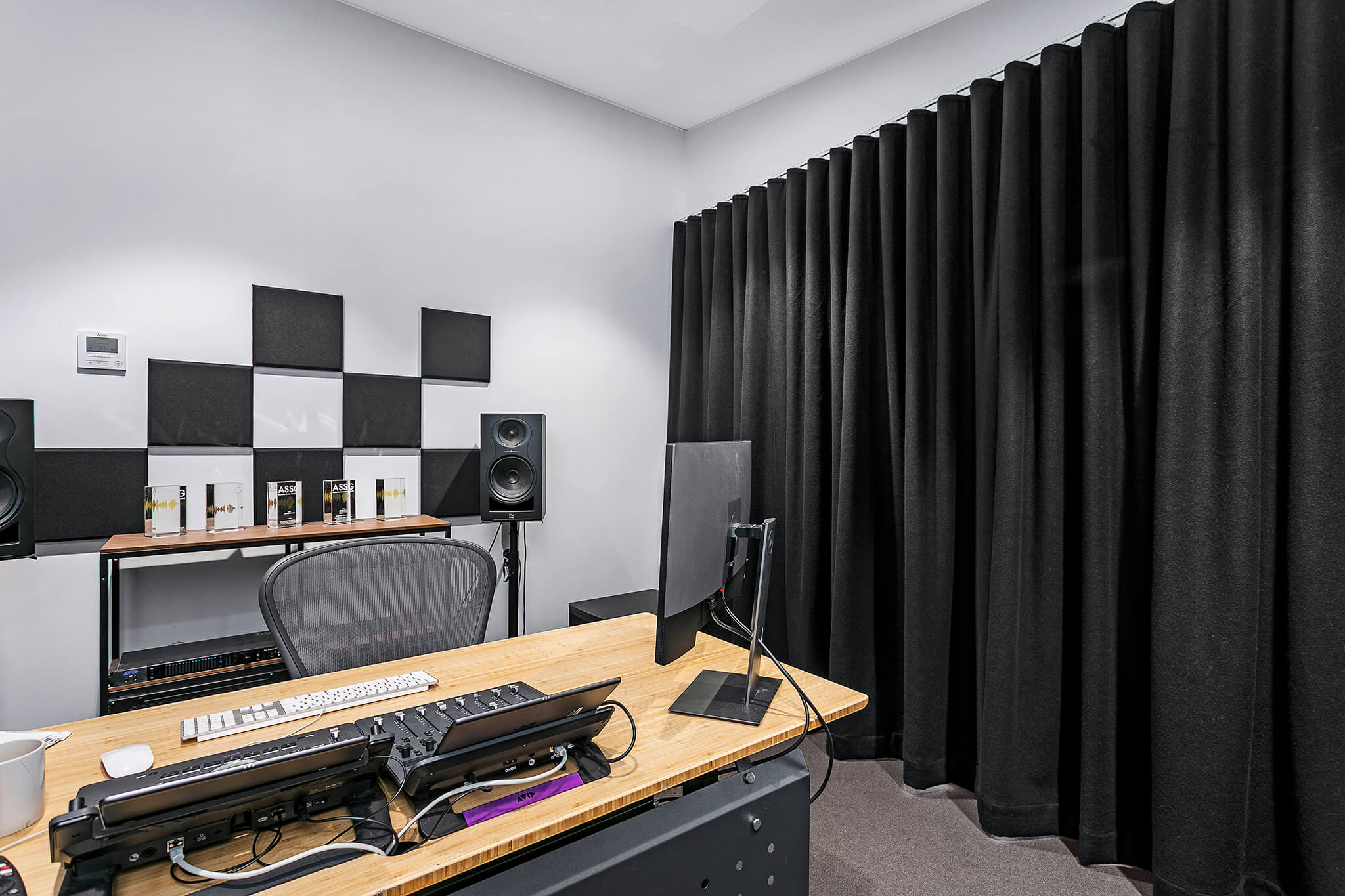What is reverberation time – with real audio examples
Reverberation time is the key measurement or quantification of what we consider ‘bad’ acoustics.
Sound in a room will repeatedly bounce off reflective surfaces such as the floor, walls, ceiling, windows or tables while gradually losing energy. When these reflections mix with each other, the phenomena known as reverberation is created. Reverberation is thus a collection of many reflections of sound.
Reverberation time is a measure of the time required for reflecting sound to "fade away" in an enclosed area after the source of the sound has stopped. It is important in defining how a room will respond to acoustic sound.
Technically, reverberation time is the time the sound pressure level takes to decrease by 60 dB, after a sound source is abruptly switched off. Commonly-used abbreviation for reverberation time are T or RT60.
Reverberation time values vary in different positions within a room. Therefore, an average reading is most often taken across the space being measured.
Reverberation time is the key measurement or quantification of what we consider ‘bad’ acoustics.

Why is reverberation time important
If the reverberation time in a room is too high, the presence of reflected sounds has the effect of muddying or smearing speech, making it difficult to understand what is being said. This is disastrous in high intelligibility environments in which speech quality is a key component of a successful design.
In most cases, uncontrolled noise in these spaces is not enough to harm human hearing, but is enough to be disruptive, resulting in less than ideal living, working or learning environments. Time and time again, this has been supported by scientific research.
In a study of open-plan work environments published in the Journal of Environmental Psychology, better acoustical conditions had a positive effect on employees’ perception of disturbances and cognitive stress, and corresponded well with employee self-reported measures of health and wellbeing.
In a classroom setting, it was found that high reverberation times increased listening difficulties for children. Younger children are especially vulnerable – they are more sensitive to noise and reverberation when performing tasks that involve listening, comprehension and speech perception.



Reducing reverberation times
Every acoustic environment is different, so there is no single product or solution that will solve each project’s noise problem. However, it is true for all projects that the addition of sound-absorbing materials in a space reduces the reverberation time. Acoustic testing can be conducted to determine whether reverberation times in a room are above the recommended range provided by the Australian Acoustical Society. This enables acoustic engineers to quantify the acoustic problem and then recommend the types and configuration of sound-absorbing treatments to address it.
In general, reverberation times for high intelligibility spaces are recommended to be between 0.4 to 0.8 seconds. Specific recommendations are provided in AS/NZS 2107:2016 “Acoustics—Recommended design sound levels and reverberation times for building interiors”, for example <0.6 seconds in a library area (educational building), 0.4 to 0.6 seconds for general office areas (office building), and 0.2 to 0.4 seconds for video/audio conference rooms (office building).
In some circumstances, even the reverberation times recommended by the Standard may be too high. Due to COVID-related lockdowns, there has been an increased demand for home theatre spaces that seek to recreate the cinema experience at home. There has also been a COVID-driven movement towards more video conferencing in both residential and commercial spaces. Tighter acoustic requirements may need to be considered in these environments to deliver functional spaces that meet the needs of the client.
Note that it is not possible to achieve a reverberation time of 0 seconds, nor is it desirable – this would create a ‘dead’ environment that sounds muffled or closed in. A certain amount of reverberation contributes to a healthy ‘live’ atmosphere.
Why choose acoustic blinds and curtains?
Acoustic strategies need to be congruent with the broader architectural vision for the building. You could say that a successful acoustic design is one that users of the space will not notice. The ‘failure’ of many acoustic panel products is not that they provide inadequate sound absorption – but that they do not ‘fit’ into the project more generally.
Acoustic blinds and curtains have emerged as a solution to addressing high reverberation time in a way that does not interrupt nor diminish the overall design or aesthetic of a project. Window furnishings such as blinds and curtains are a natural fit with most spaces and designs. However, unlike conventional window furnishings, acoustic blinds and curtains utilise raw materials and fabric construction that are specifically designed and tested for sound absorption. Accordingly, they can be specified as a functional alternative to traditional blinds and curtains that might otherwise be specified for a space.
Acoustic curtains are sometimes misconstrued as stage curtains or heavy curtains, and thought of as not having much aesthetic value. However, the fact is the leading products in this category are design-first solutions that deliver premium looks and styles. They are available in a range of fabrics, finishes and colours such as velvet, wool and sheer. Given the range of options available, it is easy for designers to select an acoustic blind or curtain that is visually consistent with the rest of the space while simultaneously improving internal acoustics.
Acoustic blinds and curtains are also versatile and easy to use in a wider range of applications than conventional acoustic panels. As a functional window furnishing, acoustic blinds and curtains can be easily specified and installed for almost any type of space. Acoustic panels, on the other hand, need to be mounted, which can pose practical issues for spaces with many window openings or large window walls.
